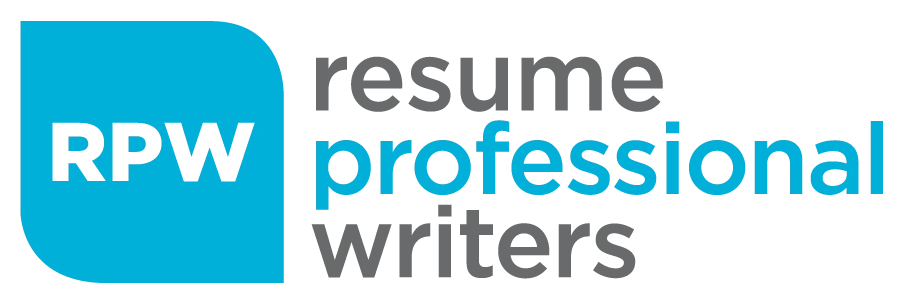Walking into a job interview, you have a very short window to make a lasting first impression — and what you wear plays a powerful role in that. Many candidates worry about over- or under-dressing, especially when the company culture hints at business casual attire for job interview settings. The challenge? This style can be interpreted differently depending on the industry, the specific company, and even the region.
As someone who’s researched hiring trends and consulted with HR professionals, I can tell you that presentation is far from superficial. Studies consistently show that attire subtly influences how confident, competent, and fitting you appear for the role. In fact, a study by the Society for Human Resource Management (SHRM) revealed that 55% of hiring managers admit appearance impacts their hiring decision even before skills are assessed.
This resource speaks to job seekers who want to understand and master the balance between professionalism and approachability that business casual attire for job interview demands. You’ll learn exactly what “business casual attire” means today, practical examples for men and women, the science behind first impressions, industry-specific expectations, and how to use your outfit to reinforce your candidacy.
Key Job Interview Statistics:
- 55% of hiring managers say a candidate’s attire influences their decision before evaluating skills (Source: SHRM).
- 76% of professionals report feeling more confident when dressed professionally for interviews (Source: Statista).
- First impressions are formed within 7 seconds of meeting someone (Source: Forbes).
- 48% of recruiters have rejected candidates because of inappropriate interview dress (Source: CareerBuilder).

Understanding Business Casual Attire for Job Interviews
Business casual is one of the most misunderstood dress codes. It’s less formal than traditional business wear but more polished than everyday casual attire. For job interviews, this style must still convey professionalism. Elements typically include tailored pants or skirts, blouses or button-down shirts, and closed-toe shoes, often paired with minimal accessories. The key is balance: you want to show you fit the company culture without appearing too relaxed.
Historically, business casual emerged in the 1980s as tech companies sought a comfortable yet professional look. Today, its meaning varies widely. In finance, it might lean toward traditional business wear without a tie, while in tech it might accommodate smart jeans with a blazer. Overdressing occasionally signals adaptability, but underdressing risks being perceived as careless. According to Deloitte Insights, aligning appearance with company culture boosts perceived cultural fit by up to 22% during hiring assessments.
When preparing, research the company’s office photos, LinkedIn team pictures, or social media feeds. If possible, ask your recruiter or HR contact what’s appropriate. Remember: even if business casual is accepted daily, for interviews, polish your look an extra 10% to convey seriousness about the opportunity.
Core Principles of Business Casual Interview Attire
To master business casual attire for job interview, follow these guiding principles:
- Fit over fashion: Well-fitted garments create a sharper image than trendy but ill-fitting pieces. Tailoring is worth the investment.
- Neutral color palette: Navy, grey, beige, white, and soft pastels work best. These suggest professionalism and adaptability.
- Quality fabrics: Opt for materials like cotton, wool blends, or silk for a refined look.
- Shoes matter: Closed-toe loafers, oxfords, or low heels in clean condition are essential.
- Keep accessories minimal: Avoid flashy jewelry or overly bold patterns unless industry norms allow creative expression (e.g., design agencies).
These principles provide a universal baseline, but the real skill lies in adapting them to specific industries, climates, and roles — which we’ll explore in the next sections.
Business Casual for Men: Interview Edition
For men, business casual in an interview blends formality with comfort. Start with well-pressed chinos or dress pants in neutral tones. Pair them with a button-down shirt in white, light blue, or checkered patterns that aren’t overly bright. Layering with a blazer instantly elevates the look, even if you suspect the work environment is more relaxed. Ties are optional but can be worn loosely if the company culture supports it. Avoid sneakers unless in cutting-edge creative or startup contexts where that’s part of the brand aesthetic.
Shoes should generally be leather loafers or oxfords in black or brown, polished to eliminate scuffs. Belts should match shoe color. Grooming plays an equal role: clean-shaven or well-maintained facial hair, trimmed nails, and a subtle scent convey attention to detail. Accessories like a sleek watch can add polish without distraction.
Lean toward layers and avoid short sleeves for most interviews unless climate or industry strongly permits. Fabric choice should accommodate potential sweating under interview stress — breathable cotton blends over synthetic that traps heat are invaluable.
Business Casual for Women: Interview Edition
Women’s business casual attire offers more flexibility but requires careful balance to avoid being too formal or too casual. A safe staple is tailored trousers or a knee-length pencil skirt, paired with a blouse or knit top in a solid or muted pattern. Dresses can work wonderfully if modest in cut — a sheath or A-line style typically reads professional. Layering with a fitted blazer can sharpen silhouettes instantly.
Shoes should be closed-toe flats, loafers, or heels no higher than 3 inches for comfort and professionalism. Avoid overly ornate designs. Hosiery is optional in many regions but may still be expected in conservative industries like law or finance.
Accessories should enhance, not dominate. Simple stud earrings, understated necklaces, and a structured handbag keep focus on you, not your outfit. Makeup should lean toward neutral palettes, avoiding overly bold eye or lip colors unless industry norms support creative expression.
Common Business Casual Attire Mistakes to Avoid
- Dressing too casually: Jeans and sneakers may pass in the office but signal under-preparedness for interviews.
- Ignoring fit: Baggy pants or overly tight tops undermine professionalism.
- Over-accessorizing: Distracting jewelry or bright patterns pull focus from your qualifications.
- Neglecting grooming: Wrinkled shirts or unkempt facial hair reflect lack of attention to detail.
- Underestimating shoes: Worn or dirty shoes can leave lasting negative impressions.
Industry-Specific Business Casual Attire Insights
| Industry | Business Casual Nuance |
|---|---|
| Finance & Law | Lean on formal side without tie (men) and with blazers or tailored dresses (women). |
| Tech | Well-fitted chinos or dark jeans with a blazer acceptable; sneakers only if culture supports. |
| Creative Fields | More expressive colors/patterns allowed, but keep structure and polish intact. |
| Education | Modest, approachable, neat — blouses, cardigans, and slacks common. |
Case Study: From Doubt to Offer
Before: Maria, a software engineer, had been interviewing at startups in Silicon Valley and got consistent rejections, even though she was well-qualified. Her outfit of jeans, graphic t-shirts, and sneakers matched her current workplace, but failed to convey seriousness during interviews.
Strategy: She upgraded to tailored dark jeans, a crisp blouse, and a fitted blazer with loafers — still casual by most measures, but more polished.
After: The next two interviews progressed to final rounds, and she received a job offer within three weeks. Recruiters noted she “looked the part” while still fitting into the tech vibe.
Your Outfit Is an Interview Asset
Dressing in business casual for an interview is not about suppressing your personality; it’s about strategically shaping perceptions. The right outfit helps align you with company culture, reinforces your professionalism, and gives you the confidence to shine in conversation. Much like your resume, it is an asset — and should be crafted with intention.
Get Expert Help with Your Resume
Frequently Asked Questions
Can I wear business casual attire for a virtual job interview?
Yes, even in virtual interviews, business casual is recommended. Employers still notice your effort, and dressing professionally helps boost your confidence, even if only your upper half is visible.
Is it okay to add a personal touch, like colorful socks or statement accessories, to business casual attire?
Yes, subtle personal touches can make you memorable, but they should not distract from your professionalism. Stick to one accent piece, like a patterned tie, scarf, or tasteful accessory.
How do I handle business casual attire if the weather is extremely hot or cold?
In hot climates, choose breathable fabrics like cotton or linen in lighter shades. For colder regions, layer smartly with sweaters, cardigans, or blazers — but avoid bulky outerwear during the interview itself.
Should I adjust business casual attire for second or follow-up interviews?
Yes. For the first interview, lean slightly more formal. For follow-ups, you can align more closely with the company’s day-to-day culture, as long as you remain polished.
What should I do if I’m unsure whether business casual is the right dress code?
When in doubt, dress slightly more formal than business casual. It’s safer to be a bit overdressed than underdressed, and it shows respect for the opportunity.








